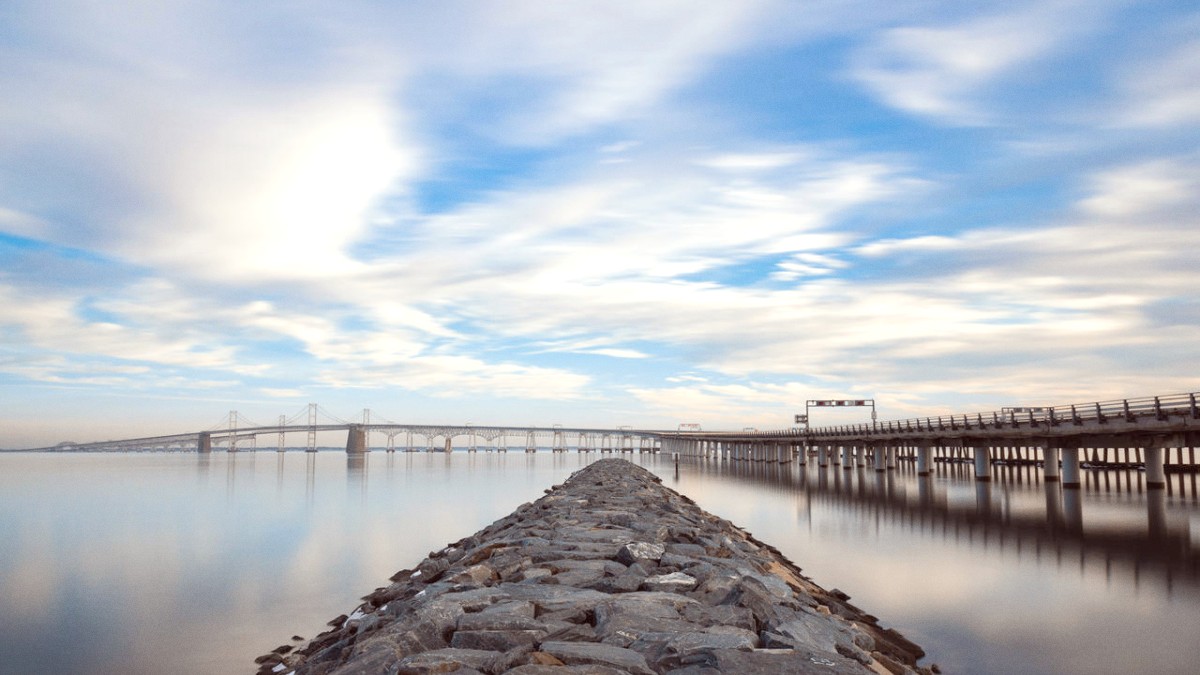
Maryland, USA
A trip to the Chesapeake Bay details a world where traditional watermen still work the waters for crabs and oysters, where historic lighthouses mark navigation routes, and where bald eagles soar over pristine wetlands. Annapolis, Maryland's capital, testifies to colonial charm and naval heritage, while Baltimore's Inner Harbor pulsates with urban energy and world-class attractions. Across the iconic Bay Bridge, Maryland's Eastern Shore presents a calmer pace, with quaint towns, expansive farmland, and wildlife refuges.
This guide details the myriad experiences available. The Chesapeake Bay region delivers varied pursuits. It rewards exploration, holding both lively urban centers and tranquil natural escapes.
Uncover a destination combining a rich past with a strong commitment to its future. Visitors find an authentic American experience shaped by deep water connections.
The Chesapeake Bay stretches over 200 miles from the Susquehanna River in Maryland to the Atlantic Ocean in Virginia. This guide focuses on the Maryland portion, encompassing its western and eastern shores. Its immense watershed covers over 64,000 square miles, draining into the Bay through more than 150 rivers and creeks. This forms an estuary of remarkable complexity and biological productivity.
On the Western Shore of Maryland, the terrain features rolling hills leading down to the Bay's edge. Cities like Baltimore and Annapolis sit along significant tributaries, the Patapsco and Severn Rivers, respectively. These urban centers feature deep-water ports and historically served as important maritime hubs. Further south, the Western Shore transitions to Southern Maryland, characterized by lower elevations, numerous inlets, and a landscape shaped by tobacco farming history and fishing villages like Solomons Island. The climate on this side of the Bay is humid subtropical, experiencing four distinct seasons with warm, humid summers and mild to cold winters.
Predominantly flat lands mark extensive farmlands, dense forests, and countless tidal marshes and creeks.
Towns like St. Michaels, Easton, and Chestertown maintain historic character, often with 18th and 19th-century architecture.
Less densely populated than the Western Shore, it is a quiet, rural atmosphere conducive to nature pursuits and a slower pace.
Home to significant wildlife refuges, it habitat for migratory birds.
The Bay itself stays relatively shallow, averaging about 21 feet. This supports a diverse ecosystem.
Its complex network of shallow flats, deep channels, and oyster reefs supports a diverse ecosystem. This unique geography directly shapes the types of pursuits available, from shallow-water crabbing to deep-sea fishing at its mouth, and fashions a varied backdrop for exploration. The confluence of freshwater rivers and saltwater from the Atlantic creates a brackish environment, defining the Bay as an unique ecological wonder.
Baltimore and Annapolis showcase urban centers and naval heritage. Southern Maryland delights with tobacco farming history and fishing villages.
Flat landscapes, farmlands, and wildlife refuges define a quieter, rural atmosphere on the Eastern Shore, perfect for nature exploration.
The Bay's unique brackish environment, born from freshwater and Atlantic saltwater, forges a distinctive ecological wonder.
The Chesapeake Bay's history runs as deep as its waters, spanning thousands of years and shaping the American experience. They lived off its abundant resources, harvesting fish, shellfish, and game, establishing complex societies and trade networks. Their intimate knowledge of the Bay informed their survival and culture, leaving a lasting legacy on the land.
European colonization began in the early 17th century, with the English establishing settlements at Jamestown (Virginia) and later St. Mary's City (Maryland's first capital). The Bay swiftly turned into an artery for trade, mainly for tobacco, which drove the economy and shaped the region's social structure, including the institution of slavery. Towns like Annapolis grew into busy colonial ports and centers of political life, witnessing events that led to the American Revolution. George Washington resigned his commission as Commander-in-Chief of the Continental Army in Annapolis in 1783, a pivotal moment in the nation's founding.
The War of 1812 brought the Bay into sharp focus. British forces sailed its waters, attacking coastal towns and attempting to capture Baltimore.
The defense of Fort McHenry in Baltimore Harbor in 1814 spurred Francis Scott to write "The Star-Spangled Banner."
Through the 19th and 20th centuries, the Bay remained a hub of maritime industry, shaping watermen's lives.
The Bay also played a role in the Underground Railroad, with its waterways holding routes for enslaved people seeking freedom. Today, preservation efforts attempt to protect historic sites, restore traditional vessels, and interpret these complex layers of history for visitors.
The Chesapeake Bay travel experience presents a blend of natural wonder, historic charm, and culinary pleasure. It is a destination where the rhythms of the water dictate much of life, holding a refreshing escape for many types of travelers.
For those drawn to history, Annapolis, the state capital, provides an immersion into colonial America. Walk its historic streets, visit the U.S. Naval Academy, and tour the Maryland State House, a structure that witnessed many important early American events. Baltimore, a larger urban center, balances its industrial past with modern attractions. The Inner Harbor, a revitalized waterfront, presents family-friendly fun with its National Aquarium and historic ships. Beyond these cities, towns like St. Michaels on the Eastern Shore, or Solomons Island in Southern Maryland, share a glimpse into the slower, water-centric pace of life, with charming boutiques, seafood restaurants, and maritime museums.
Kayaking through serene marshes, paddleboarding on calm coves, or sailing a traditional skipjack boat are ways to experience the water firsthand. Birdwatching captivates at Blackwater National Wildlife Refuge.
The Bay’s culinary scene highlights fresh seafood. Blue crabs, steamed or in crab cakes, are a must-try. Oysters, rockfish, and clams also feature prominently on menus.
Accommodation spans from campgrounds to luxury resorts. A rental car offers flexibility outside city centers, though Baltimore and Annapolis present public transit and walkable districts.
The region presents diverse dining options, from casual crab shacks where you crack your own crabs on paper-covered tables, to upscale restaurants with Bay views. Local farmers markets present fresh produce, and vineyards and breweries add to the local flavors.